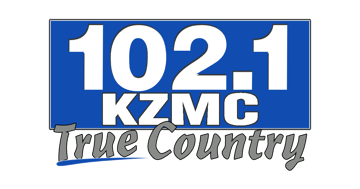Rural Mainstreet Economy in Negative Territory Again

May 2024 Survey Results at a Glance:
-For a ninth straight month, the overall Rural Mainstreet Index sank below growth neutral.
-The farmland price index dropped below growth neutral after 53 straight months above the 50.0 threshold.
-Farm equipment sales sank below growth neutral for the 11th time in the past 12 months.
-Bankers registered average yearly cash rents of $245 per acre for non-irrigated crop land in the region.
-According to trade data from the International Trade Association, regional exports of agriculture goods and livestock for 2024 year-to-date were down 9.5% from the same period in 2023.
OMAHA, Neb. (May 16, 2024) — For a ninth straight month, the overall Rural Mainstreet Index (RMI) sank below growth neutral, according to the May survey of bank CEOs in rural areas of a 10-state region dependent on agriculture and/or energy.
Overall: The region’s overall reading for May fell to 44.2 from 45.8 in April. The index ranges between 0 and 100, with a reading of 50.0 representing growth neutral.
“Higher interest rates, weaker agriculture commodity prices and higher grain storage costs pushed the overall reading below growth neutral for the ninth straight month,” said Ernie Goss, PhD, Jack A. MacAllister Chair in Regional Economics at Creighton University’s Heider College of Business.
Farming and ranching land prices: After rising above the growth neutral threshold for 53 straight months, the region’s farmland prices slumped to 47.9 from April’s 56.5. “For the first time in more than four years, Creighton’s survey is detecting weakening farmland price growth. Only 4.2% of bankers reported that farmland prices expanded from previous levels,” said Goss.
Bankers registered average yearly cash rents for non-irrigated crop land in the region of $245 per acre.
According to trade data from the International Trade Association, regional exports of agriculture goods and livestock for 2024 year-to-date were down 9.5% from the same period in 2023.
Farm equipment sales: The farm equipment sales index for May dropped to 34.0 from 47.7 in April. “This is the 11th time in the past 12 months that the index has fallen below growth neutral. Higher borrowing costs, tighter credit conditions and weaker grain prices are having a negative impact on the purchases of farm equipment,” said Goss.
Banking: The May loan volume index declined to a very strong 82.0 from April’s record high 85.4. The checking deposit index sank to 44.0 from April’s 52.2. The index for certificates of deposits and other savings instruments fell to a still healthy 62.0 from 71.7 in April.
This month bankers were asked about their banks’ average interest rates on farm operating loans and farmland loans. On average, bankers reported an average interest rate of 8.6% on farm operating loans and 7.4% on farmland loans.
Jeff Bonnett, CEO of Havana National Bank in Havana, Ill., reported that, “We all need to be aware of the hidden impact of Buy Now, Pay Later (BNPL) that is sweeping across the nation.”
Bonnett also indicated that the top three BNPL organizations DO NOT report to the credit bureaus! He argues that the estimated figures of this unreported BNPL consumer credit are astronomical and are hidden from lenders trying to make accurate credit decisions for auto, housing and other consumer debt approvals.
Hiring: The new hiring index for May decreased to 50.0 from April’s 56.8. “Approximately 7.7% of bankers reported an increase in hiring from the previous month. This is down from 13.6% in April,” said Goss. Over the past 12 months, U.S. Bureau of Labor Statistics data indicate that the regional Rural Mainstreet Economy boosted jobs by 3.2%, compared to 0.9% for urban areas of the same states.
Confidence: Rural bankers remain very pessimistic about economic growth for their area over the next six months. The May confidence index slumped to 28.8, the lowest since November of last year, and down from April’s 37.5. “Weak agriculture commodity prices and farm exports combined with downturns in farm equipment sales over the past several months continued to constrain banker confidence,” said Goss.
Home and retail sales: Both home sales and retail sales sank below growth neutral for the last seven months. The May home sales index increased to a weak 46.0 from 34.8 in April. “Elevated mortgage rates and a limited supply of homes are sinking the home-sales index below growth neutral in rural areas,” said Goss.
The retail-sales index for May increased to a frail 46.1 from April’s 41.3. “High consumer debt, elevated interest rates and weaker farm income are cutting into retail sales for the Rural Mainstreet Economy,” said Goss.
The survey represents an early snapshot of the economy of rural agriculturally- and energy-dependent portions of the nation. The Rural Mainstreet Index is a unique index covering 10 regional states, focusing on approximately 200 rural communities with an average population of 1,300. The index provides the most current real-time analysis of the rural economy. Goss and Bill McQuillan, former Chairman of the Independent Community Banks of America, created the monthly economic survey and launched it in January 2006.
Below are the state reports:
Colorado: The state’s RMI for May dropped to 61.5 from April’s 74.2. The farmland and ranchland price index for May fell to 58.2 from 63.4 in April. The state’s new hiring index sank to 62.5 from 65.2 in April. According to trade data from the International Trade Association, exports of agriculture goods and livestock for 2024 year-to-date were up 190.4% from the same period in 2023.
Illinois: The state’s May RMI rose to 39.6 from April’s 38.0. The farmland price index declined to 46.0 from 53.1 in April. The state’s new hiring index fell to 47.4 from 52.6 in April. According to trade data from the International Trade Association, exports of agriculture goods and livestock for 2024 year-to-date were down 22.8% from the same period in 2023. Jim Eckert, CEO of Anchor State Bank in Anchor, Ill., reported that, “In our area we have had excessive rain, and most farmers are behind on planting. What was planted early (before the rainy period) looks very good.”
Iowa: May’s RMI for the state increased to 40.6 from April’s 36.7. Iowa’s farmland price index for May improved to 52.2 from 52.1 in April. Iowa’s new hiring index for May declined to 47.7 from 52.1 in April. According to trade data from the International Trade Association, exports of agriculture goods and livestock for 2024 year-to-date were up 6.4% from the same period in 2023. Terry Engelken, past president of Washington State Bank in Washington, Iowa, reported that, “We have plenty of moisture and could use a few dry days to finish planting.”
Kansas: The Kansas RMI for May sank to 35.4 from April’s 36.0. The state’s farmland price index slumped to 49.2 from 52.6 in April. The new hiring index for Kansas fell to 45.9 from 51.9 in April. According to trade data from the International Trade Association, exports of agriculture goods and livestock for 2024 year-to-date were up 3.7% from the same period in 2023.
Minnesota: The May RMI for Minnesota rose to 51.0 from 48.1 in April. Minnesota’s farmland price index declined to 49.3 from 54.2 in April. The new hiring index for May improved to 55.3 from 54.2 in April. According to trade data from the International Trade Association, exports of agriculture goods and livestock for 2024 year-to-date were down 18.9% from the same period in 2023.
Missouri: The state’s May RMI plummeted to 51.2 from April’s 75.8. The farmland price index fell to 51.3 from 63.9 in April. The state’s new hiring gauge slipped to 65.2 from April’s 65.8. According to trade data from the International Trade Association, exports of agriculture goods and livestock for 2024 year-to-date were down 17.1% from the same period in 2023.
Nebraska: The Nebraska RMI for May sank to 41.8 from 42.7 in April. The state’s farmland price index for May dropped to 46.7 from 54.5 in April. Nebraska’s May new-hiring index sank to 48.2. According to trade data from the International Trade Association, exports of agriculture goods and livestock for 2024 year-to-date were up 19.4% from the same period in 2023.
North Dakota: North Dakota’s RMI for May slipped to 41.2 from 42.3 in April. The state’s farmland price index declined to 46.5 from 54.1 in April. The state’s new hiring index declined to 48.0 from 54.1 in April. According to trade data from the International Trade Association, exports of agriculture goods and livestock for 2024 year-to-date were up 3.5% from the same period in 2023.
South Dakota: The May RMI for South Dakota sank to 47.9 from April’s 49.6. The state’s farmland price index decreased to 48.4 from 56.5 in April. South Dakota’s May new hiring index declined to 50.3 from 56.6 in April. According to trade data from the International Trade Association, exports of agriculture goods and livestock for 2024 year-to-date were down 24.5% from the same period in 2023.
Wyoming: The May RMI for Wyoming sank to 39.3 from 41.3 in April. The May farmland and ranchland price index sank to 45.9 from 54.1 in April. Wyoming’s new hiring index fell to 47.3 from 53.7 in April. According to trade data from the International Trade Association, exports of agriculture goods and livestock for 2024 year-to-date were down 72.6% from the same period in 2023.
